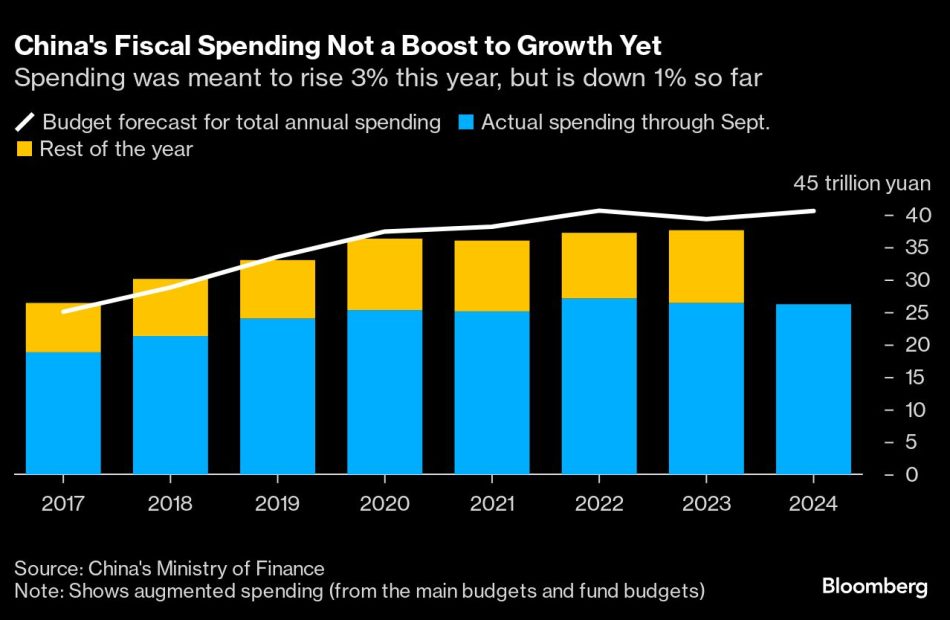Want $10 Million in Retirement? 1 Simple ETF to Buy and Hold for Decades.
Most of us would love to have $10 million stashed away when we retire. Yet most of us will never get there. In fact, most of us will get nowhere close. But that doesn’t mean attaining a $10 million nest egg is out of the question. You’ll have to remain incredibly disciplined, but if you follow the investing tricks below, you’ll only need one exchange-traded fund (ETF) to get you to that magic mark.
Before we jump into where you should invest your money, it’s critical that we cover how you should be investing your money. After all, this is the real secret behind acquiring massive long-term wealth.
Start Your Mornings Smarter! Wake up with Breakfast news in your inbox every market day. Sign Up For Free »
Perhaps the greatest trick of all time for building wealth is recurring investments. Instead of spending the next few minutes researching which stocks or ETFs you want to buy, take a moment to activate automated investing in your online brokerage account. The long-term results will be tremendous.
Recurring investments simply mean that your brokerage account is automatically investing a set amount of money per month for you, without you needing to lift a finger. For example, your brokerage account can withdraw $500 from your savings account on the first of each month, investing the proceeds into an ETF that tracks the S&P 500. While choosing good investment vehicles is important, putting more money to work on a regular basis is equally important. This not only ensures regular saving, but also helps you dollar-cost average, locking in attractive entry points for new deposits.
Let’s say you start with exactly zero dollars. If you invest $500 automatically per month and earn the long-term market average of roughly 10%, you’ll wind up with a $10 million portfolio in less than 53 years. That means a recent high school graduate who employs this investment method will be worth $10 million at age 71. Not bad!
If you want to get to $10 million faster, there are a few things you can do. First, start with more than zero dollars. Second, invest more than $500 per month. Third, earn more than 10% per year. But regardless of which lever you try to play with, automated investments is a must-have for investors looking to reach the $10 million mark.
This leaves only one question: Where should your automated investments be invested?
If you’re ready to start saving, the only ETF you’ll ever need is the Vanguard S&P 500 ETF (NYSEMKT: VOO). That’s because over many decades, this ETF has produced average returns of more than 10%. And because it’s a Vanguard fund, its expense ratio is just 0.03% — nearly as low as it gets!
US Inflation Progress Gets Harder in Last Mile Down
(Bloomberg) — US inflation probably moved sideways at best in October, highlighting the uneven path of easing price pressures in the home stretch toward the Federal Reserve’s target.
Most Read from Bloomberg
The core consumer price index due on Wednesday, which excludes food and energy, likely rose at the same pace on both a monthly and annual basis compared to September’s readings.
The overall CPI probably increased 0.2% for a fourth month, while the year-over-year measure is projected to have accelerated for the first time since March.
“The October CPI report will likely support the notion that the last mile of inflation’s journey back to target will be the hardest,” Wells Fargo & Co. economists Sarah House and Aubrey Woessner wrote in a report. “Excluding the more volatile energy and food components, the unwinding of pandemic-era price distortions has proven to be frustratingly slow.”
They added that prices of core goods probably rose again in October, due in part to higher demand for cars and auto parts after Hurricanes Helene and Milton. Evacuation orders from the storms also forced more people to stay in hotels, continuing what’s been a “glacial slowing” in services prices.
What Bloomberg Economics Says:
“We expect both CPI and PPI to come in hot, pushing long-end rates even higher — and further restraining the economy over the next couple months. We expect control-group retail sales to slow and the unemployment rate to continue to climb, reaching 4.5% by year end,”
—Anna Wong, Stuart Paul, Eliza Winger, Estelle Ou, Chris G. Collins, economists. For full analysis, click here.
Even so, “the story is very consistent, with inflation continuing to come down on a bumpy path,” and one or two bad reports won’t change that pattern, Fed Chair Jerome Powell said Thursday after the central bank cut interest rates by a quarter point.
The US government will also release wholesale inflation figures in the coming week, which probably picked up after stalling in September. Meantime, earnings growth that continues to outpace inflation likely contributed to another decent gain in retail sales, in data due Friday.
On Tuesday, Fed Governor Christopher Waller is due to speak at a banking conference before the central bank releases its latest Senior Loan Officer Opinion Survey. Powell is scheduled for an event later in the week, while New York Fed President John Williams and Dallas Fed President Lorie Logan are also on the calendar.
Trump Rally Runs On As Tesla, Palantir Fly; Five Stocks Near Buy Points
Dow Jones futures will open Sunday evening, along with S&P 500 futures and Nasdaq futures, after stocks surged to record highs following Donald Trump’s presidential victory.
The Dow Jones and S&P 500 had their best weeks in a year while hundreds of leading stocks gapped out to new highs betting on a tailwind under a second Trump administration Tesla (TSLA) skyrocketed back above a $1 trillion market cap, with CEO Elon Musk was a huge backer of the Trump election effort. Palantir Technologies (PLTR) had an even better week, with earnings leading the way.
There were many big earnings winners this week, though also notable losers.
↑
X
This Stock Could Be The Next Chipotle. But Can It Maintain Stellar Earnings Growth?
Earnings season remains active. Monday.com (MNDY) will report Q3 results before the open. MNDY stock is extended, a common problem for leading stocks.
But not Meta Platforms (META), Google-parent Alphabet (GOOGL), CrowdStrike (CRWD), Vertex Pharmaceuticals (VRTX) and brand-new Dow Jones component Nvidia (NVDA). Meta and Google stock are just below buy points. CrowdStrike stock, Vertex and Nvidia are actionable now.
Nvidia, Meta and Vertex stock are on IBD Leaderboard, with Tesla stock on the Leaderboard watchlist. Nvidia stock is on SwingTrader. Palantir stock, Nvidia and Monday.com are on the IBD 50. Google was Friday’s IBD Stock Of The Day.
Dow Jones Futures Today
Dow Jones futures open at 6 p.m. ET on Sunday, along with S&P 500 futures and Nasdaq 100 futures.
Remember that overnight action in Dow futures and elsewhere doesn’t necessarily translate into actual trading in the next regular stock market session.
Join IBD experts as they analyze leading stocks and the market on IBD Live
Stock Market Rally
The stock market rally saw huge gains in the past week. The Dow Jones Industrial Average jumped 4.6% in last week’s stock market trading, the S&P 500 index popped 4.7% and the Nasdaq composite leaped 5.7% — all hitting record highs.
The small-cap Russell 2000 spiked 8.6% to its best levels since its all-time high in November 2021.
Markets are booming on hopes that Trump’s return to the White House, backed by a GOP Congress, will mean tax cuts, deregulation and increased merger activity.
Meanwhile, the Federal Reserve cut rates again on Thursday. Fed Chief Jerome Powell signaled that rate cuts would continue. And he said policymakers won’t consider Trump’s fiscal policies until they actually take shape.
As the sector ETFs below show, stock market gains were broad and deep.
Dozens, if not hundreds of stocks had double-digit weekly gains. Tesla skyrocketed 29%, but Palantir stock shot up 39%, Axon Enterprise (AXON) nearly 42% and on and on.
The 10-year Treasury yield fell 5 basis points to 4.31%, tumbling from Wednesday’s four-month intraday high of 4.48%. The two-year Treasury yield, more closely tied to Fed policy, rose 5 basis points to 4.25%.
U.S. crude oil futures rose 1.3% to $70.38 a barrel for the week.
ETFs
Among growth ETFs, the Innovator IBD 50 ETF (FFTY) leaped 11.5% last week. The iShares Expanded Tech-Software Sector ETF (IGV) ran up 9.7%, with Palantir and CrowdStrike both notable members. The VanEck Vectors Semiconductor ETF (SMH) gained 6%, with Nvidia stock the dominant member.
ARK Innovation ETF (ARKK) spiked 15.9% last week and ARK Genomics ETF (ARKG) bolted 7.9%. Tesla stock is still a big holding across Ark Invest’s ETFs. Cathie Wood has also built up a big Nvidia position.
SPDR S&P Metals & Mining ETF (XME) jumped 8.5% last week. The Global X U.S. Infrastructure Development ETF (PAVE) advanced 9.2%. U.S. Global Jets ETF (JETS) ascended 5.6%. SPDR S&P Homebuilders ETF (XHB) gained 3.6%. The Energy Select SPDR ETF (XLE) popped 6.5%. The Health Care Select Sector SPDR Fund (XLV) was up 1.65%, with Vertex stock a holding. The Industrial Select Sector SPDR Fund (XLI) bounced 6%.
The Financial Select SPDR ETF (XLF) rallied 5.5% and the SPDR S&P Regional Banking ETF (KRE) spiked 10.45%.
Time The Market With IBD’s ETF Market Strategy
Stocks Near Buy Points
Meta stock rose 3.9% to 589.34 last week, rebounding from the 10-week line and retaking the 21-day. The Facebook and Instagram parent now has a new flat base, base-on-base pattern with a 602.95 buy point.
Google stock gained 4.1% to 178.54 last week, nearing a 182.02 cup-with-handle buy point. A move above Thursday’s high of 181.08 would offer a slightly early entry. The relative strength line is still near the lowest levels since March, reflecting Google’s underperformance vs. the S&P 500.
CrowdStrike stock jumped 8.9% to 330.03, retaking the 200-day line and clearing a 323.94 cup-with-handle buy point, according to MarketSmith analysis. The RS line still well off June’s peak, though it’s making a comeback. CrowdStrike plunged after triggering a global IT outage on July 19, with fears of hefty liability costs and long-term reputational damage in focus. The cybersecurity giant reports earnings in late November, with investors curious to see if CrowdStrike is finding its footing.
Vertex stock surged 9.7% in the week to 516.74. Shares peeked past early entries on Thursday then ran past the 510.63 flat-base buy point on Friday. Vertex earnings and sales beat on Nov. 4, but the focus is on the pipeline. In January, the FDA will consider approving Vertex’s next-generation cystic fibrosis drug and its pain treatment.
Nvidia stock, which joined the Dow Jones on Nov. 8, rallied 8.7% in the week to 147.15, back above a 140.76 consolidation buy point. The buy zone runs to 147.80. Investors also could treat the Oct. 22 high of 144.42 as a high-handle entry. Nvidia earnings are due Nov. 20.
Five S&P 500 Stocks On This Elite IBD List Near Buy Points
Tesla Stock
Tesla stock spiked 29% to 321.22, the biggest weekly gain since the week ended Jan. 27, 2023. Tesla stock now a $1.03 trillion valuation, topping the $1 trillion for the first time in two years.
Musk was a huge Trump supporter, and could join the new administration in an official or advisory capacity.
It’s not clear how much Trump could or will do regarding EVs, or even if those moves would be a net benefit to Tesla. On self-driving, it’s technology not regulators that are holding back Tesla, though there’s likely less risk from regulatory probes of Tesla crashes.
But what is clear is that TSLA stock reflects an investor belief that Trump will be a boon to Tesla.
What To Do Now
The stock market rally is in great shape. The major indexes and leading stocks suggest that this could be the start of another big bull run.
So you want to be heavily invested. If you aren’t, build up your exposure gradually, buying leading stocks that aren’t extended. If you are, you can make more buys, depending on how your risk tolerance is. But also go through your portfolio and see if you there are can prune some laggards and funnel that cash into winners.
A pullback in the indexes or near-vertical stocks would not be a surprise. And while a massive period of news is in the rearview mirror, earnings season will remain heavy for the next few weeks.
Work on your watchlists to spot stocks that are in range or setting up.
Read The Big Picture every day to stay in sync with the market direction and leading stocks and sectors.
Please follow Ed Carson on Threads at @edcarson1971 and X/Twitter at @IBD_ECarson for stock market updates and more.
YOU MIGHT ALSO LIKE:
Why This IBD Tool Simplifies The Search For Top Stocks
Best Growth Stocks To Buy And Watch
IBD Digital: Unlock IBD’s Premium Stock Lists, Tools And Analysis Today
How To Invest: Rules For When To Buy And Sell Stocks In Bull And Bear Markets
‘Roaring 20s’ on Wall Street could extend into the 2030s after likely Republican sweep, market veteran says
Since the U.S. economy began rebounding from the pandemic, market veteran Ed Yardeni has been banging the drum that a new “Roaring 20s” will drive Wall Street.
Now, with Donald Trump headed back to the White House, Republicans retaking the Senate, and the House likely staying in GOP control, a decade of bullish returns not only looks more probable, it could have longer legs.
“Indeed, it increases the odds that the good times will continue through the end of the decade and possibly into the 2030s,” Yardeni, the president of Yardeni Research, wrote in a note on Wednesday.
This decade is already off to a strong start. Except for a down year in 2022, when the Federal Reserve began an aggressive rate-hiking cycle, the S&P 500 has notched double-digit returns each year and is already up nearly 26% so far in 2024.
That comes after markets had their best week in a year, soaring after Trump’s decisive win with a Republican sweep looking likely. For the week, the S&P 500 finished up 4.7%, the Dow Jones Industrial Average gained 4.6%, the Nasdaq jumped 5.7%, and the small-cap Russell 2000 soared 8.6% as investors bet on lower taxes and deregulation juicing the economy further.
“We’re sticking with our investment recommendation to Stay Home rather than to Go Global,” Yardeni wrote. “In other words, overweight the US in global stock portfolios.”
Of course, the Roaring 20s from a century ago infamously ended with the stock market crash in 1929, which sparked the Great Depression that lasted through the 1930s.
And for his part, Yardeni sees other scenarios this century. But his view for a new Roaring 20s is the most likely with 50% odds, while a 1990s-style stock market “meltup” has 20% odds, and a 1970s-style geopolitical crisis with a possible US debt crisis has a 30% probability.
“But we are considering raising the odds of the Roaring 2020s scenario as a looser regulatory environment and lower corporate and income taxes under Trump 2.0 should boost investment and propel productivity-led economic growth,” he added.
Yardeni has also been warning about “bond vigilantes” sending yields higher as the outlook for U.S. debt and deficits continues to deteriorate. Trump’s tax cuts and tariffs are also seen as inflationary, limiting the Fed’s ability to cut rates further.
But Scott Bessent, who has been floated as a possible Treasury secretary under Trump, has noted that lower energy prices and deregulation are disinflationary and could offset the potential inflationary effects of higher tariffs.
Super Micro Computer Shares Fall Again on Latest Update. Is the Bottom In, or Is There More Downside Ahead for the Stock?
Shares of Super Micro Computer (NASDAQ: SMCI) were once again tumbling after the company provided investors with an update on its fiscal first-quarter results, as well as its current audit and filing process. Supermicro was a huge winner early in the year, with its stock quadrupling within the first three months of 2024. However, its shares are now solidly in negative territory year to date after this latest dip.
Let’s take a closer look at Supermicro’s latest wows and consider what investors should do with the stock.
Start Your Mornings Smarter! Wake up with Breakfast news in your inbox every market day. Sign Up For Free »
In an update to investors, Supermicro said it now expects its fiscal Q1 sales to be in the range of $5.9 billion to $6.0 billion. Earlier guidance was for revenue to be between $6 billion and $7 billion. While clearly a disappointment, it is notable that last year, the company produced revenue of $2.1 billion. So even with the lowered expectation, revenue will still nearly have tripled year over year.
Supermicro is now looking for adjusted earnings per share (EPS) to be in a range of $0.75 to $0.76, down from its prior guidance range of $0.67 to $0.83. That would be up from $0.34 a year ago when adjusting for the stock’s earlier 10-for-1 stock split.
Gross margins, which were a big issue for the company last quarter when they slipped to 11.2% from 15.5% in the fiscal third quarter and 17% a year ago, were projected to come in at 13.3%. This is a sequential improvement that moves it back closer to its more historic 15% to 17% range. However, this is very much a low-margin business. Chip companies like Nvidia and Broadcom have gross margins closer to 75%.
Looking ahead to its second fiscal quarter, Supermicro forecast revenue to come in between $5.5 billion to $6.1 billion, with adjusted EPS of between $0.56 to $0.65. A year ago, the company recorded fiscal Q2 sales of $3.66 billion and adjusted EPS of $0.56 split adjusted.
As for its accounting, Supermicro said that the Special Committee it formed found no evidence of fraud by management, but that it will issue some remedial measures to help the company strengthen its internal governance and oversight functions. However, the company is unable to determine when it will file its 10-K annual report, which was due on Aug. 29.
With the company not currently able to file its annual report, the stock is at risk of being delisted by the Nasdaq. The stock exchange sent Supermicro a letter of non-compliance on Sept. 17, and it has 60 days to file or submit a plan to regain compliance. At the moment, it appears the stock is in serious danger of getting delisted, since the company does not even currently have an auditor after Ernst and Young recently resigned.
Can Anything Save Super Micro Computer?
What is going on at Super Micro Computer (NASDAQ: SMCI)?
Shares of the once high-flying artificial intelligence (AI) server company have collapsed after a growing scandal has enveloped the business.
Start Your Mornings Smarter! Wake up with Breakfast news in your inbox every market day. Sign Up For Free »
This timeline shows how the story has unfolded:
-
Aug. 27: In a short-seller report, Hindenburg Research accuses the company of accounting manipulation, self-dealing, sanctions evasion, and channel stuffing. The stock plunges.
-
Aug. 28: Supermicro files notice that it’s unable to submit its 10-K in a timely manner. At the time, it said it needed more time to “complete its assessment of the effectiveness of its internal controls over financial reporting.” It also said it didn’t anticipate any changes to the fiscal 2024 results it had reported on Aug. 6.
-
Sept. 3: Supermicro sends a letter to customers and partners, reasserting it didn’t anticipate material changes to its fiscal 2024 results. It also called the short-seller report false and inaccurate while reminding customers that recent events don’t impact its products.
-
Sept. 20: Supermicro says it received a letter from Nasdaq saying it was out of compliance because of its late 10-K filing. The company has 60 days to regain compliance or submit a plan for doing so.
-
Sept. 26: The Wall Street Journal reports the Justice Department is investigating Super Micro Computer, apparently in response to accusations from a former employee about accounting violations.
-
Oct. 30: Supermicro says its auditing firm, Ernst & Young (EY), has resigned. In July, EY had communicated concerns about Supermicro’s financial reporting, warning that a timely filing of the 10-K was at risk. EY ultimately told the company it couldn’t rely on management’s representations and is unwilling to be associated with the financial statements prepared by the company.
-
Nov. 5: Supermicro reports preliminary fiscal 2025 first-quarter earnings, missing estimates. The stock tumbles further.
Supermicro reported preliminary first-quarter results, and the numbers were both incomplete and below expectations. It said revenue would fall in the range of $5.9 billion to $6.0 billion, below its previous guidance of $6.0 billion to $7.0 billion. On the bottom line, it expects adjusted earnings per share of $0.75 to $0.76, at the middle of its previous range of $0.67 to $0.83.
For the fiscal second quarter, management sees revenue falling sequentially to $5.5 billion to $6.1 billion with adjusted earnings per share of $0.56 to $0.65.
Republicans On The Verge Of Seizing Control Of US House, Paving Way For Bold Reforms In Trump's Second Term
The Republican party is on the brink of securing control of the U.S. House of Representatives, a development that could significantly impact the legislative landscape when Donald Trump makes a White House comeback in January.
What Happened: The Republicans are close to securing the majority in the House, having won 212 seats in the 435-member House, Reuters reported citing Edison Research. The party needs to secure six more seats to maintain control of the House.
With the Senate already under Republican control, this would give the party significant power to push through a wide-ranging agenda, including tax and spending cuts, energy deregulation, and border security measures.
Despite the ongoing vote count, the Republicans have already secured enough wins to take control of the Senate from the Democrats. However, the results of 19 House races, mainly in competitive districts in Western states, are still unclear.
See Also: Elon Musk Reveals Toughest Part Of Building Tesla’s Humanoid Robot
Republican senators are set to decide next week on the party’s leader in the Senate for 2025, with John Thune, John Cornyn, and Rick Scott vying for the position. On Saturday, Senators Bill Hagerty and Rand Paul endorsed Scott over the more senior Thune and Cornyn, who were initially seen as favorites.
Why It Matters: The Republicans’ potential control of the House comes on the heels of Trump’s victory in the 2024 presidential election. The party had already secured the Senate, ensuring that Trump’s party would control at least one chamber of Congress in the coming year.
However, there are concerns about the future of the U.S. intelligence community under Trump’s leadership, with critics fearing that he could further politicize these institutions, using them to serve his personal and political interests rather than their traditional role of safeguarding national security.
Meanwhile, Trump also plans to expand the federal death penalty during his second term, including making more individuals eligible for execution. This has raised concerns among criminal justice reform advocates and anti-death penalty groups.
Image via Wikimedia Commons
Market News and Data brought to you by Benzinga APIs
© 2024 Benzinga.com. Benzinga does not provide investment advice. All rights reserved.
Meet 3 Supercharged Growth Stocks That Could Profit From a Trump Presidency, According to Certain Wall Street Analysts
One of the most hard-fought and contentious elections in U.S. history is now in the books, and Donald J. Trump has emerged as the President-elect. Many things are expected to change, and investors are turning over every stone to find the stocks that are best positioned to profit in the next four years.
Astute investors will note that one of the biggest catalysts over the past couple of years has been the rapid adoption of artificial intelligence (AI) and the implications of that technology to usher in the fourth industrial revolution. Generative AI, while still experiencing growing pains, has the potential to automate many mundane tasks, which would ultimately increase productivity and boost profits.
Start Your Mornings Smarter! Wake up with Breakfast news in your inbox every market day. Sign Up For Free »
While the adoption of the technology is still in the early stages, many experts are predicting trillions of dollars will be added to the global economy, resulting in a windfall for leaders in the field.
Let’s look at supercharged growth stocks that could profit from a Trump presidency, according to certain Wall Street analysts.
Microsoft (NASDAQ: MSFT) has been among the early beneficiaries of AI. The company was quick to recognize the game-changing potential of the technology, investing heavily in ChatGPT parent OpenAI. The fruit of that strategy was the development of Copilot, a suite of digital assistants powered by generative AI. Microsoft has demonstrated and deployed these Copilots, which have been adopted by “customers in every industry,” according to CEO Satya Nadella.
One example provided by management was the rollout of Microsoft 365 Copilot to 68,000 employees at one company, saving three hours of time per person, per week, on average.
Success stories like these are also helping fuel the adoption of Azure, Microsoft’s cloud infrastructure service, which grew 33% year over year. It said Azure’s growth included 12 percentage points resulting from demand for AI services. The company also offers a laundry list of the world’s most popular AI models to its cloud customers.
Microsoft stock is up 74% since the start of last year (as of this writing), which coincides with the dawn of AI. However, analysts at UBS believe that the rapid adoption of AI is ongoing and will be fueled by Trump’s presidency — and Microsoft will continue to profit from the trend. The analysts cited the company’s cloud revenue growth and the robust adoption of Copilot as drivers.








